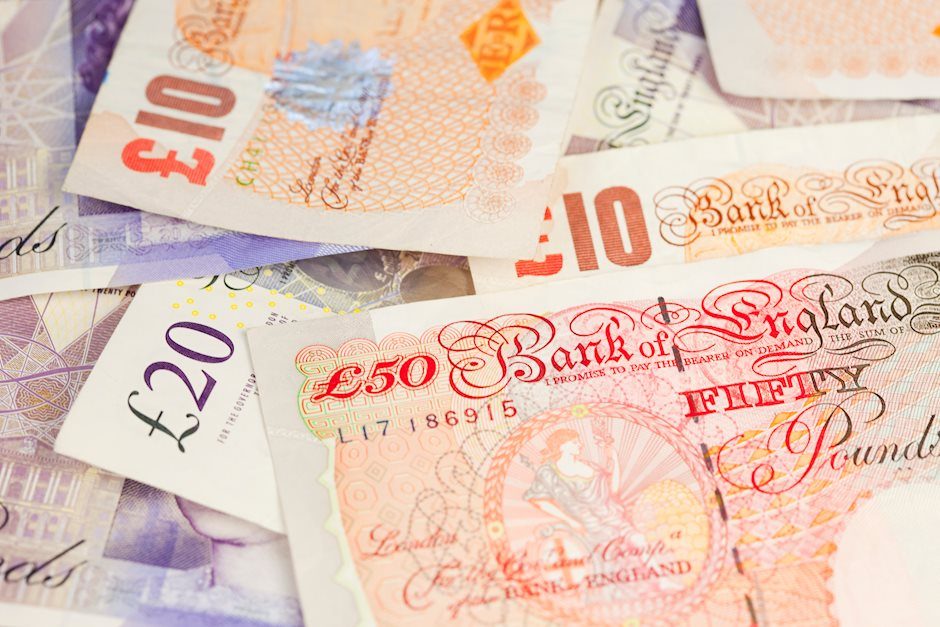GBP/USD Forecast: Pound Sterling is yet to clear key 1.2550 hurdle
- GBP/USD holds steady near 1.2550 in the European morning on Monday.
- Technical buyers could show interest once 1.2550 is confirmed as support.
- The Bank of England will announce monetary policy decisions later in the week.

GBP/USD closed the previous week marginally higher and seems to have stabilized at around 1.2550 to start the new week. The pair needs to confirm 1.2550 as support to continue to push higher in the near term.
The US Dollar (USD) came under heavy selling pressure in the early American session on Friday with the immediate reaction to disappointing data releases for April. Heading into the weekend, however, hawkish comments from Federal Reserve (Fed) officials helped the currency erase its losses and forced GBP/USD to retrace its daily rally.
The US Bureau of Labor Statistics reported that the Unemployment Rate edged higher to 3.9% in April from 3.8% in March. In the same period, Nonfarm Payrolls (NFP) rose 175,000, missing the market expectation of 243,000 by a wide margin. Other data from the US showed that the ISM Services PMI dropped into contraction territory at 49.4 in April from 51.4.
Chicago Fed President Austan Goolsbee downplayed the weak labor market data on Friday and said that current numbers were solid. Later in the day, Fed Board of Governors member Michelle W. Bowman noted that she would be willing to raise rates further if data shows inflation progress has stalled or reversed.
The economic calendar will not offer high-impact data releases on Monday. Hence, the risk perception could impact the USD's valuation and GBP/USD's action later in the day. After trading mixed in the Asian session, US stock index futures turned positive on the day in the early European session. A bullish opening in Wall Street could support GBP/USD during the American trading hours.
On Thursday, the Bank of England will announce monetary policy decisions.
GBP/USD Technical Analysis
After spiking above 1.2600 on Friday, GBP/USD erased a large portion of its daily gains and closed the week near 1.2550, where the 200-day Simple Moving Average (SMA) is located. In case the pair makes a daily close above that level and starts using it as support, buyers could remain interested. In this scenario, 1.2600 (Fibonacci 50% retracement of the latest downtrend) could be seen as next resistance before 1.2665 (Fibonacci 61.8% retracement) and 1.2700 (psychological level, static level).
If GBP/USD fails to flip 1.2550 into support, sellers could take action. In this case, supports could be seen at 1.2500 (psychological level, static level), 1.2470 (100-period SMA on the 4-hour chart) and 1.2445 (Fibonacci 23.6% retracement).
Pound Sterling FAQs
The Pound Sterling (GBP) is the oldest currency in the world (886 AD) and the official currency of the United Kingdom. It is the fourth most traded unit for foreign exchange (FX) in the world, accounting for 12% of all transactions, averaging $630 billion a day, according to 2022 data. Its key trading pairs are GBP/USD, aka ‘Cable’, which accounts for 11% of FX, GBP/JPY, or the ‘Dragon’ as it is known by traders (3%), and EUR/GBP (2%). The Pound Sterling is issued by the Bank of England (BoE).
The single most important factor influencing the value of the Pound Sterling is monetary policy decided by the Bank of England. The BoE bases its decisions on whether it has achieved its primary goal of “price stability” – a steady inflation rate of around 2%. Its primary tool for achieving this is the adjustment of interest rates. When inflation is too high, the BoE will try to rein it in by raising interest rates, making it more expensive for people and businesses to access credit. This is generally positive for GBP, as higher interest rates make the UK a more attractive place for global investors to park their money. When inflation falls too low it is a sign economic growth is slowing. In this scenario, the BoE will consider lowering interest rates to cheapen credit so businesses will borrow more to invest in growth-generating projects.
Data releases gauge the health of the economy and can impact the value of the Pound Sterling. Indicators such as GDP, Manufacturing and Services PMIs, and employment can all influence the direction of the GBP. A strong economy is good for Sterling. Not only does it attract more foreign investment but it may encourage the BoE to put up interest rates, which will directly strengthen GBP. Otherwise, if economic data is weak, the Pound Sterling is likely to fall.
Another significant data release for the Pound Sterling is the Trade Balance. This indicator measures the difference between what a country earns from its exports and what it spends on imports over a given period. If a country produces highly sought-after exports, its currency will benefit purely from the extra demand created from foreign buyers seeking to purchase these goods. Therefore, a positive net Trade Balance strengthens a currency and vice versa for a negative balance.
Premium
You have reached your limit of 3 free articles for this month.
Start your subscription and get access to all our original articles.
Author

Eren Sengezer
FXStreet
As an economist at heart, Eren Sengezer specializes in the assessment of the short-term and long-term impacts of macroeconomic data, central bank policies and political developments on financial assets.

















